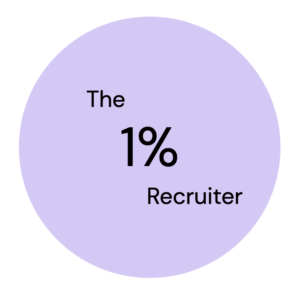
It’s often a question I find startup founders struggling with.
Founders often build their first 10–15 hires through their network. It works—until it doesn’t. At some point, the network dries up, roles get harder, and recruitment eats up time you don’t have.
What happens when you’ve reached a glass ceiling and cannot attract the people you need? When is the time to engage with an external recruitment partner or find your first in-house recruiter?
Let’s look into 3 scenarios I’ve encountered when advising tech entrepreneurs on this matter.
🥇 Expensive Tools Don’t Do the Work for You
Let’s start with the myth that recruitment is nothing but browsing around on LinkedIn, poaching some people and seamlessly making hires.
I’ve spoken to founders who have paid for a LinkedIn Corporate license (approximately €10,000 a year in some cases) but haven’t made a single hire due to a lack of knowledge on how to identify relevant profiles and bring them to the table for discussions. Or let’s be honest, simply missing time going through hundreds of profiles and spending hours each week to do the recruiter’s job.
🥈 A “Three-in-One HR Person” Is Not a Headhunter for Niche Talent
Oftentimes, early-stage companies hire their first “HR person”, expected to cover three functions at once: People & Culture, office management and recruitment. From the business perspective, HR and recruitment are often seen as the same, but when it comes to strategic talent acquisition, which requires active sourcing and headhunting of niche talent, the 3-in-1 hits its limitations.
Sure thing, a small team requires people wearing multiple hats, but be open to paying for an external recruitment partner (e.g. agency or a freelancer) when you still have a low hiring demand that doesn’t justify having a full-time recruiter in the team, but you need to find key talent.
🥉 Scaling Struggle: Waiting Too Long to Hire Your First Talent Partner
Mistake I’ve seen many times: from the fear of establishing your own internal recruitment team from the start, you hire 20-30 roles through a recruitment service provider, and once the high load of growth is over, you will hire your first in-house recruiter to take over the work and keep on going in the low season.
In that way, you’ve probably built a strong team of professionals through a knowledgeable partner, but could have done the same together with an in-house recruiter, keeping the talent pipelines and know-how in the company and saving loads of money from success-fee-based recruitment models.
So, When Is It Wise to Take Your First Recruiter on Board?
—> You have utilised your own talent network and need more expertise on how to attract more senior or niche talent. You want to grow your employer brand in the market and want a dedicated person who will not only fill the roles but build a system (an ATS for managing talent pools, fair and transparent validation process, etc) that ensures a sustainable hiring process and good reputation in the market.
—> Strong talent acquisition partner should be able to fill at least 2 positions per month. If your 12+ months view tells you that you need to grow your team at least by 20-30 members, it’s time to bring a dedicated in-house recruiter on board.
Final Notes
Even if you have a strong in-house recruiter in the company, it’s wise to build a network among external recruitment partners who are approachable when your company needs more hands in the scale-up phase or requires specific talent intelligence when expanding to new markets or undiscovered territories among niche talent.
What’s your experience in that? Thinking about hiring your first recruiter?
I’m happy to share ideas or swap notes. Just drop me a message!
*Photo by Clem Onojeghuo on Unsplash
Subscribe to my LinkedIn Newsletter "The 1% Recruiter"




